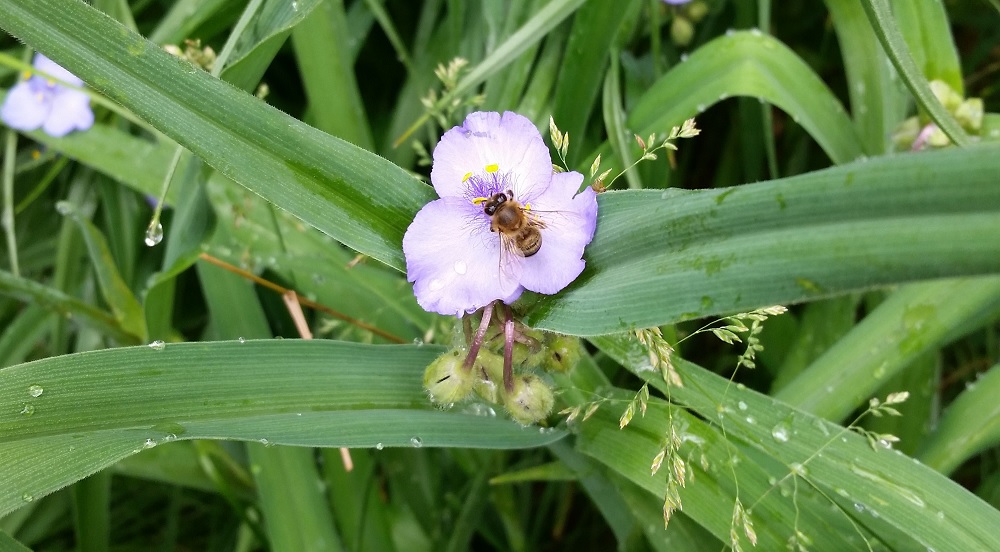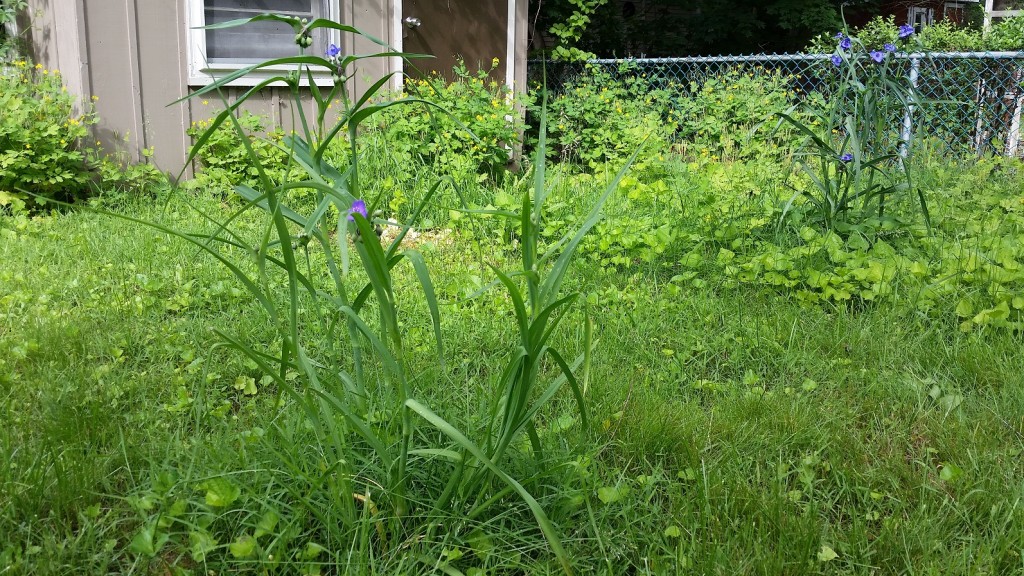As the number of backyard and urban beekeepers surges nationwide, I visited a friend’s hives to write about honey bees. I also looked into the bees’ struggles with colony collapse disorder.
But writing the article, I found that a still more urgent problem than honey bees may be wild bees. Honey bees, lovely and important as they are, aren’t native. And the troubles that challenge them also afflict our native pollinators.
Many wild bees are in even more trouble than honey bees. Honey bees are highly productive pollinators and honey-makers, so human beings who need bees for their economic livelihood – from farmers to apiarists to restaurant owners – fret over their future and work to save them. Less so wild bees.
As biologist Lynn Dicks writes in Nature: “Although there have been dramatic falls in the numbers of managed honey bee Apis mellifera colonies in some countries, it remains a widespread and common bee, not in imminent danger of extinction.”
She reminds us that “there are bee species around the world in genuine danger of extinction, such as the once-common rusty-patched bumblebee in the United States, which has vanished from 87% of its historic range since the early 1990s.”
Wild bees saw a 23% decline between 2008 and 2013, according to a PNAS study.
Fortunately, efforts to help honey bees often help wild bees, too. I visited beekeeper Bonita Conlon at Warm Colors Apiary, which she co-owns with her husband Don Conlon, former president of the Massachusetts Beekeepers Association. Alongside diseases, the parasitic varroa mite, and pesticides, she pointed to a loss of forage area for both wild and honey bees.
“There used to be fields of wildflowers in the West, but they’ve plowed it under for corn and soybeans,” she said. “You need some wild areas for all the pollinators. Plant for the bees. Don’t mow the whole lawn, leave the wildflowers.” She also suggested that wildflowers should be allowed to flourish on highway median strips.
I took Conlon’s advice in the backyard of my own building, leaving patches of tall blue “weeds” scattered throughout the grass when mowing before a barbecue:
They’re called spiderworts, an ungainly name for a beautiful flower, and they’re native from Canada all the way down to Argentina. In the top photo of this entry, a honey bee visited one of the flowers I left growing. I see native bumble bees on them from time to time, too.
I wrote more about the local history, poetry, and troubles of honey bees in my article for the Daily Hampshire Gazette:
I’ve always had a thing for creepy crawlies. I was the kid who always caught the wasp stuck in the classroom to let it out the window. I’ll still crouch to move a worm from the sidewalk into the grass.
So when a colleague of mine, Sara Eddy, started her first beehive, I devoured her Facebook posts about the process. And this spring, I had a chance to visit her and her bees.
The hive sat pertly in her Amherst backyard, painted lavender and protected from bears by an electric fence. The smoker she uses to calm the bees waited in her driveway, puffing a stream of gray into the air from its metal spout.
—-continue reading

